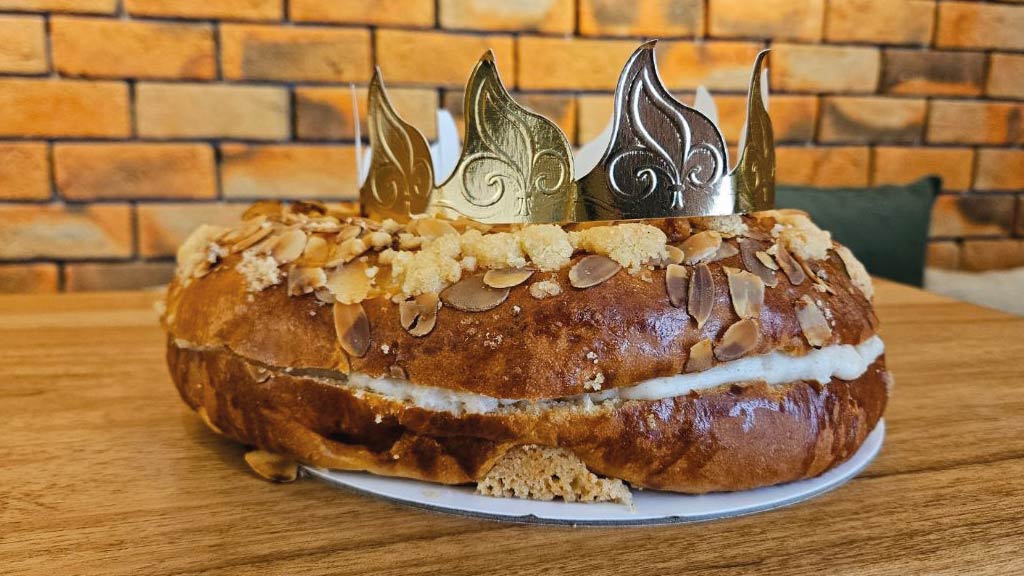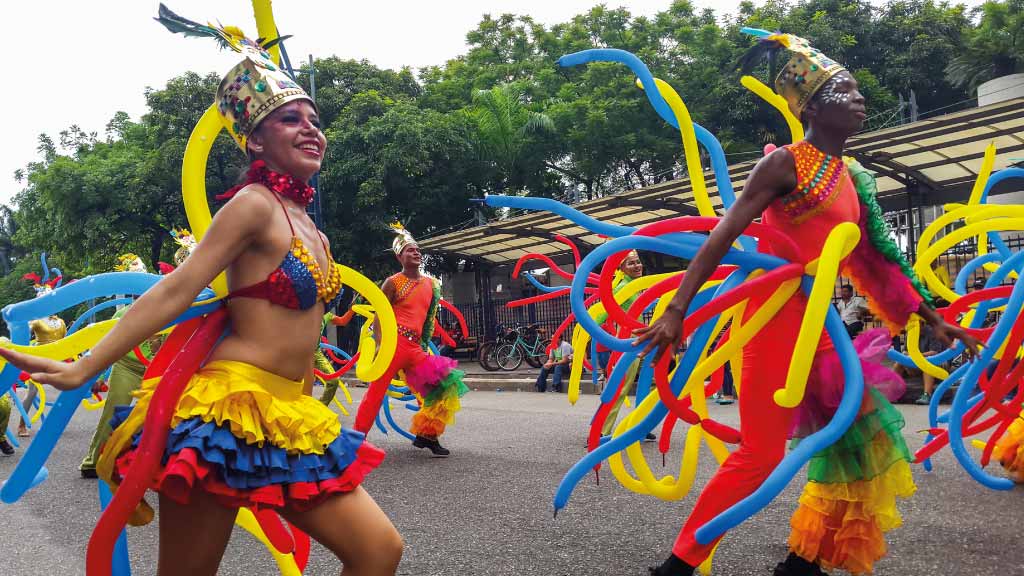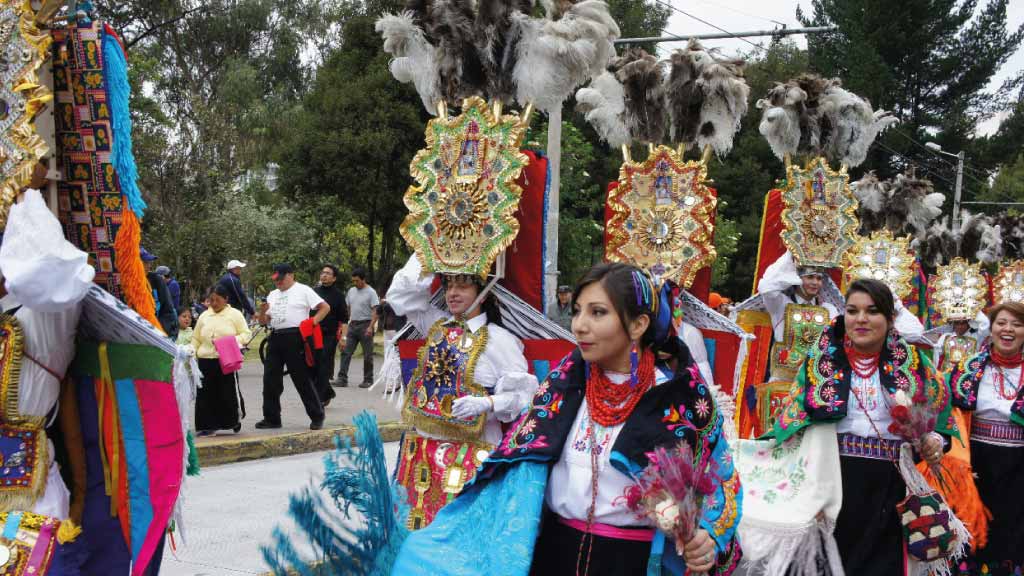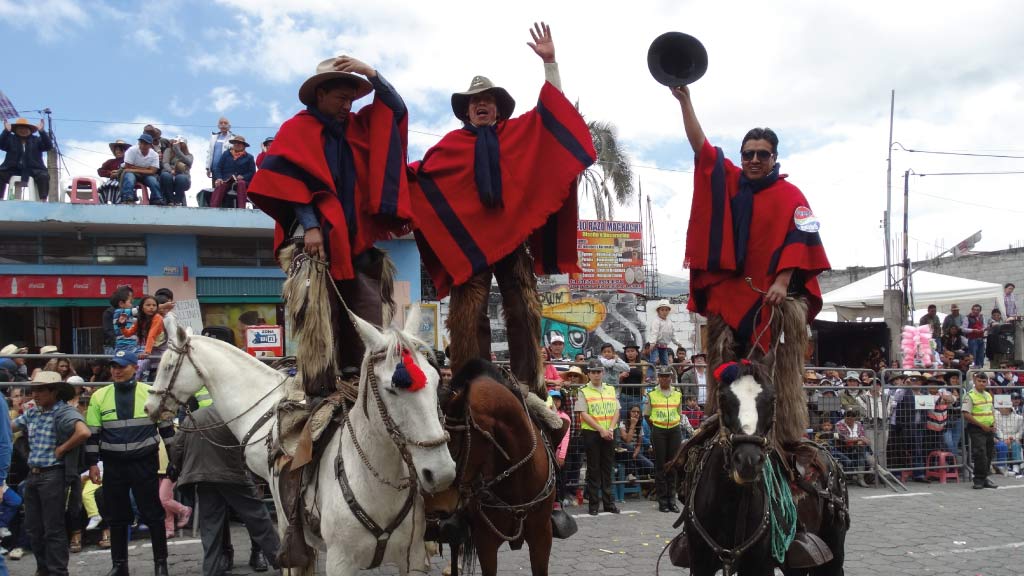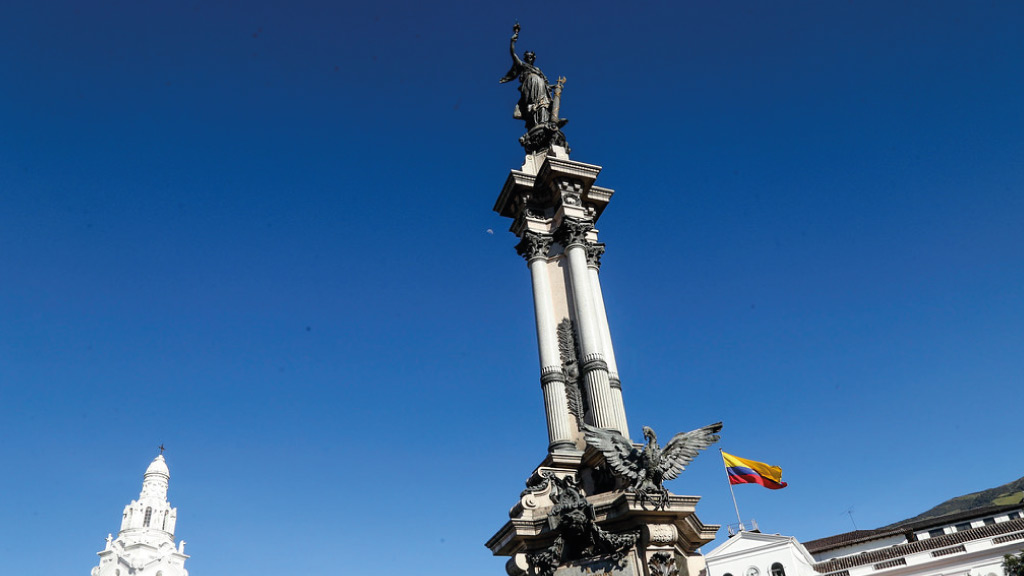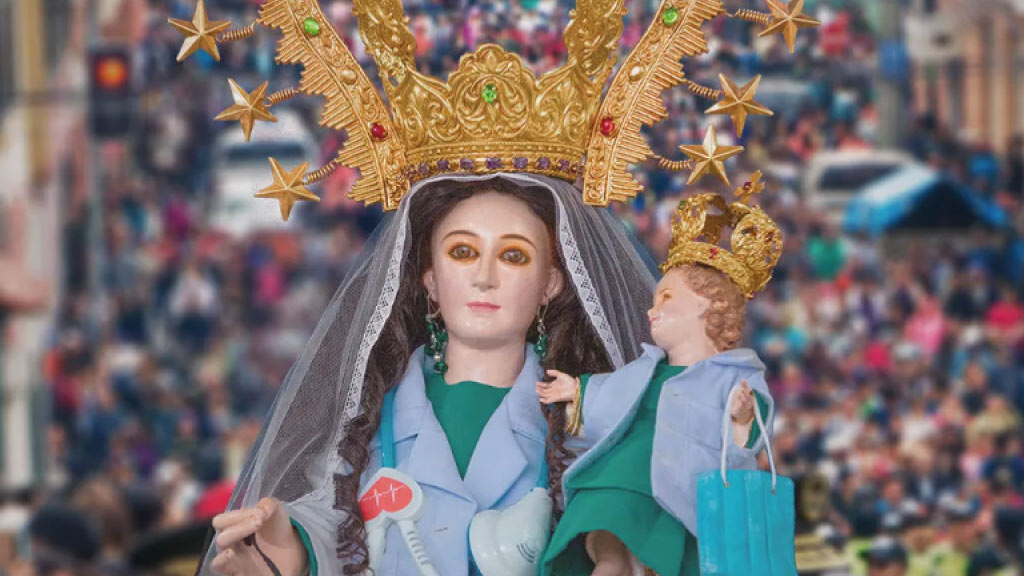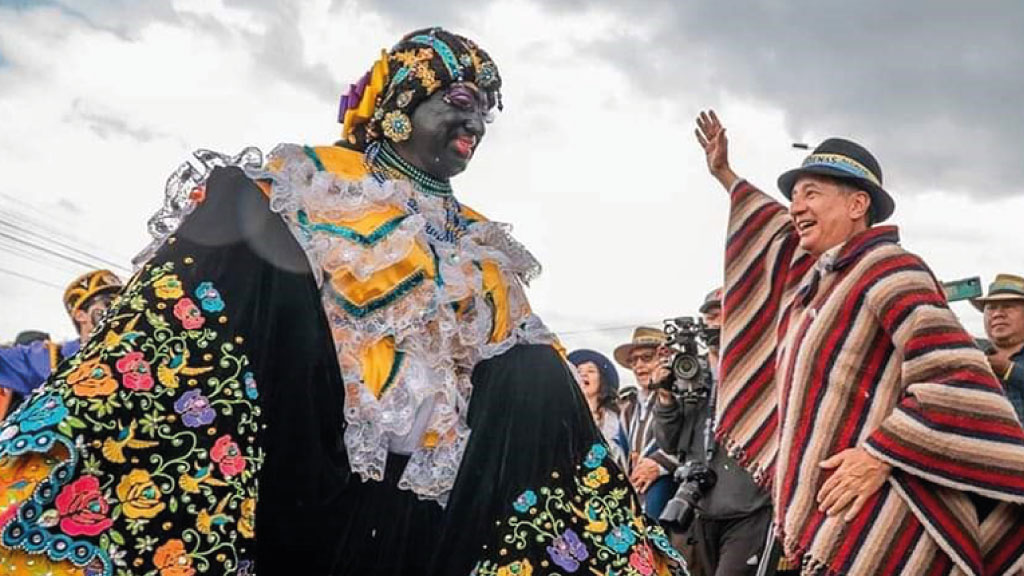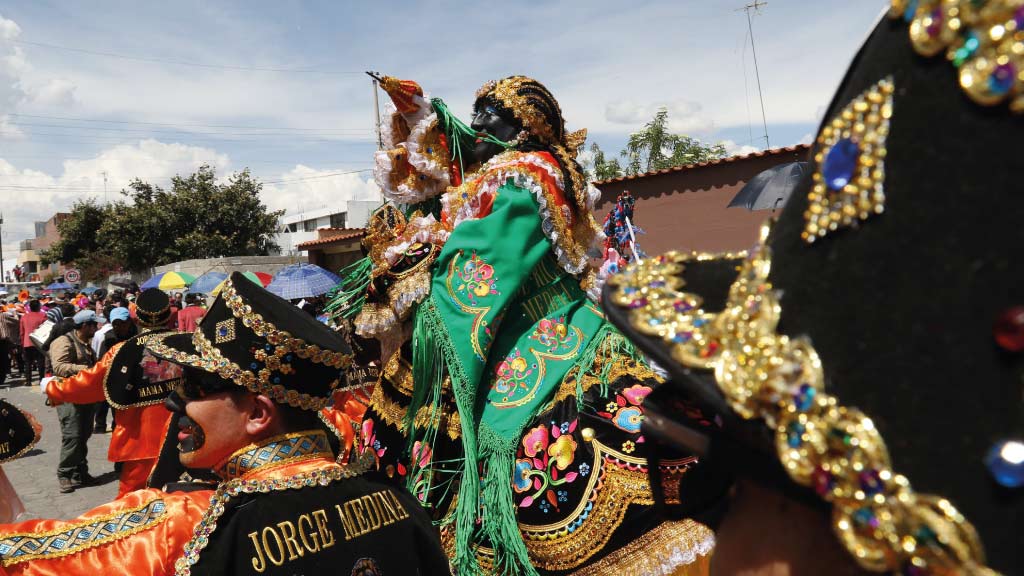Ecuador Festivals & Celebrations
Ecuadorians never need much of an excuse for a party, and the best news is that tourists are often welcome to join in the fun.
Across the calendar year, there are many special dates that mark noteworthy Ecuador celebrations. In this blog, we’ll do our best to walk you through the best Ecuador festivals held each month.
It’s also not unusual to cross paths with smaller, improvised community festivals on your travels. So, be spontaneous, and be prepared to join in the merriment of music, dance, parades, and local moonshine.
Keep reading for our list of the most colorful Ecuador Festivals, celebrations, and holidays that should be on your radar.
SECURE YOUR ECUADOR TRAVEL
Get a FREE personalised quote today
Ecuador Celebrations Throughout the Year
What are the traditional celebrations of Ecuador?
Some share the same date and occasion as Western holidays, such as Easter, Christmas, and New Year.
Other Ecuadorian Festivals are based on the phases of the sun, and important agricultural seasons throughout the year.
There are also plenty of quirky local parties to be enjoyed in small towns and communities, from the highlands to the coast and Amazon.
So, let’s take a quick walk through the calendar year of the best Ecuador celebrations & festivals not to be missed.

Diablada de Pillaro Festival
1st-6th January
The Ecuador festival year kicks off with an unusual off-the-beaten-path celebration in the small Andean town of Pillaro, and it’s an absolute cracker!
According to local stories, the Diablada de Pillaro originates from colonial times. The indigenous communities would dress up as devils to get back at the Spanish priests who enforced the catholic religion on them.
Visitors to Pillaro today can enjoy six days of wild partying with local dancers in spectacular devil costumes. Colorful devils from small communities outside of town converge on the central plaza, where music and abundant alcohol fuel the celebrations into the early hours.
Foreign tourists are very welcome to join the fun, but be warned, the Diablada is often quite boisterous, and very alcoholic.
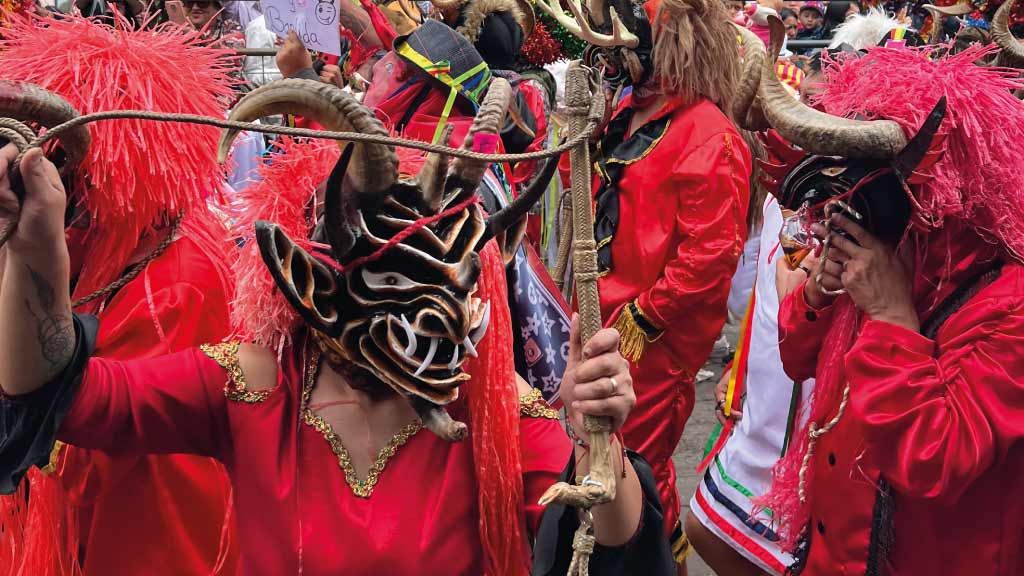
Three Kings Day (Día de los Reyes)
6th January
The Three Kings Festival in Ecuador is marked each year on the day of the Epiphany.
Processions take place on the streets of many Andean towns, with worshipers carrying baby Jesus, accompanied by Mary and Joseph, and the Three Kings usually on horseback.
While different processions occur from Christmas Day until Epiphany, the main celebration is on the 6th of January. On this day, Ecuadorian families often get together to eat servings of Rosca de Reyes sweet bread, which is sold in most bakeries.
Carnaval Fiesta
At the start of Lent each year, 47 days before Easter
Carnaval is an important festival celebration in Ecuador and right across Latin America. The most famous celebration is of course in Rio de Janeiro Brazil, with spectacular samba dance parades.
While Ecuador’s Carnaval may not rival Rio in glamour and fame, it makes up for it in the energetic spirit of festivities.
Ecuadorian Carnaval in full swing is all about letting your hair down before Lent. That means people starting water fights, spraying party foam, and even throwing flour and eggs over one another.
In some towns like Guaranda, Guamote, and Cuenca the celebrations are particularly hard-core and raucous, so expect to get wet and dirty.
Ecuador’s Carnaval is a 4-day long weekend holiday, so many locals travel in the country to enjoy the long break.
Pawkar Raymi – Spring Equinox
21st March
Pawkar Raymi means the Fiesta of the Flowering (of the crops). It’s a time to give thanks to Pacha Mama (Mother Earth) for her bounty. It’s a colorful celebration associated with the harvest of many agricultural products.
This Ecuador Festival is mostly celebrated in indigenous towns and communities across the country. It’s a time of merriment with dance, music, and feasting.
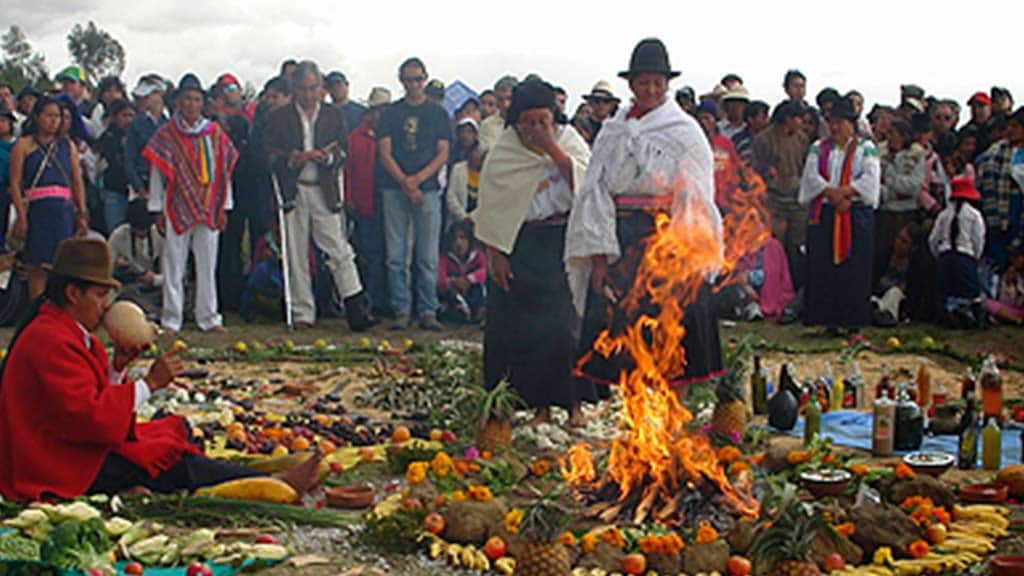
Corpus Christi Festival
24th May
Corpus Christi is an Ecuadorian celebration that combines Catholic traditions with indigenous Andean culture.
The religious significance of Corpus Christi (Body of Christ) is a remembrance of the Eucharist -the body and blood of Christ. Catholics celebrate mass on this day across the country.
Indigenous communities celebrate Corpus Christi with more color and passion. The night before is often marked by spinning fireworks attached to a metal tower structure, and the consumption of local firewater homebrew. On the day of Corpus Christi, the community will first celebrate mass at church, before joining impressive, colorful parades around town with folk music and dance.
The most famous place to experience Corpus Christi celebrations in Ecuador is the town of Pujili, in Cotopaxi Province, part of the Quilotoa Loop.
Holy Week (Semana Santa) & Easter (Pascua)
The first full moon after the spring equinox, and the preceding week
Religious celebrations are a big deal in Ecuador, and Holy Week (Semana Santa) is arguably the most important of them all for Catholics.
Holy Week in Quito is a week-long string of events, with important processions and masses held across the capital.
The grandfather of processions during Semana Santa in Quito is the Procesión Jesús del Gran Poder. A spectacle full of color and sound, the religious ritual finds thousands of parishioners trailing the streets of the historic center while hundreds of thousands look on.

Purple and black-clad Cucuruchos and veiled Verónicas take to the streets in droves, dressed head to foot in long robes and pointed hats. The Cucuruchos march barefoot as penance, some carrying large wooden crosses in homage to Jesus. Meanwhile, the Verónicas’ veils pay homage to the woman who helped Christ from the cross.
The procession starts at noon, but you’ll need to find a spot along the route early as people start to gather in the early morning in the Plaza de San Francisco.
Another way for tourists to celebrate Holy Week in Ecuador is to try the traditional dish of Fanesca. This soup is found in restaurants and homes across the city during Semana Santa in Quito. It is made using 12 beans and grains, cod fish, potatoes, peanuts, eggs, and other vegetables like butternut squash, onions, and cabbage. Tradition says that the 12 beans and grains represent the twelve apostles, while the fish represents Christ.
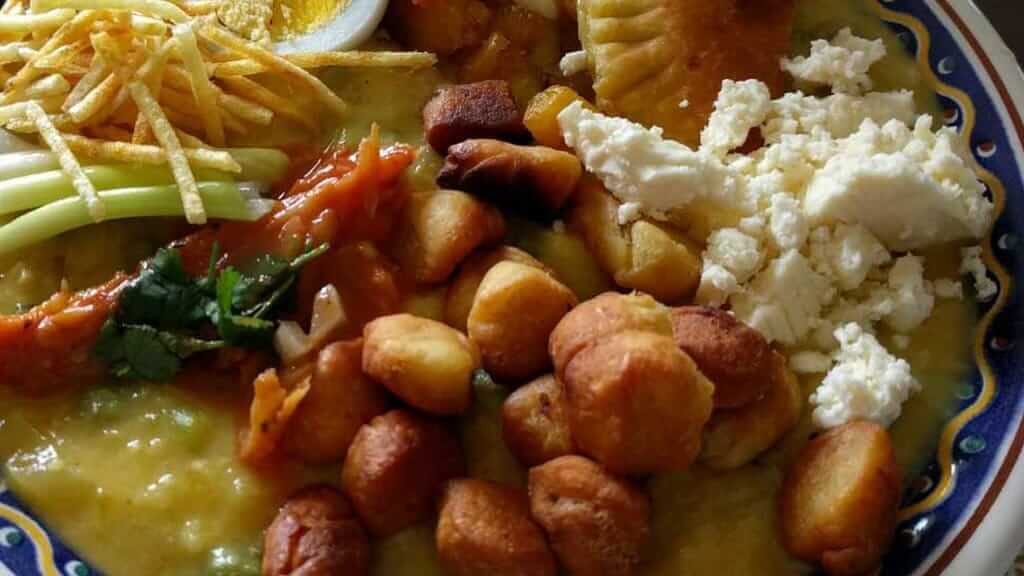
Battle of Pichincha
24th May
The 24th May 1882 is a date etched in the heart of every proud Ecuadorian. It is the day that the Battle of Pichincha took place on the slopes of the volcano above Quito. On that famous day, victory would end centuries of Spanish occupation of the city, and mark a turning point in the fight for independence of the country.
Today, Battle of Pichincha celebrations are held every year on 24th May in cities, towns, and villages right across Ecuador. This public holiday remembers the soldiers who fought Ecuador’s War of Independence.
Typically, the day is celebrated with military parades and a national holiday. For an authentic experience that captures the spirit of the holiday, head up to Quito’s Cima de la Libertad (the summit of liberty) - a monument and museum built at the site of the historic battle on Pichincha’s slopes. Here, tourists can experience parades with military bands, and fly-overs paying tribute to the heroes of the revolution.
Visitors might also enjoy military street parades in Ecuador’s major cities such as Quito, Guayaquil, and Cuenca. Each year timings and venues vary, so it’s best to check local information if you’d like to catch one of these events.
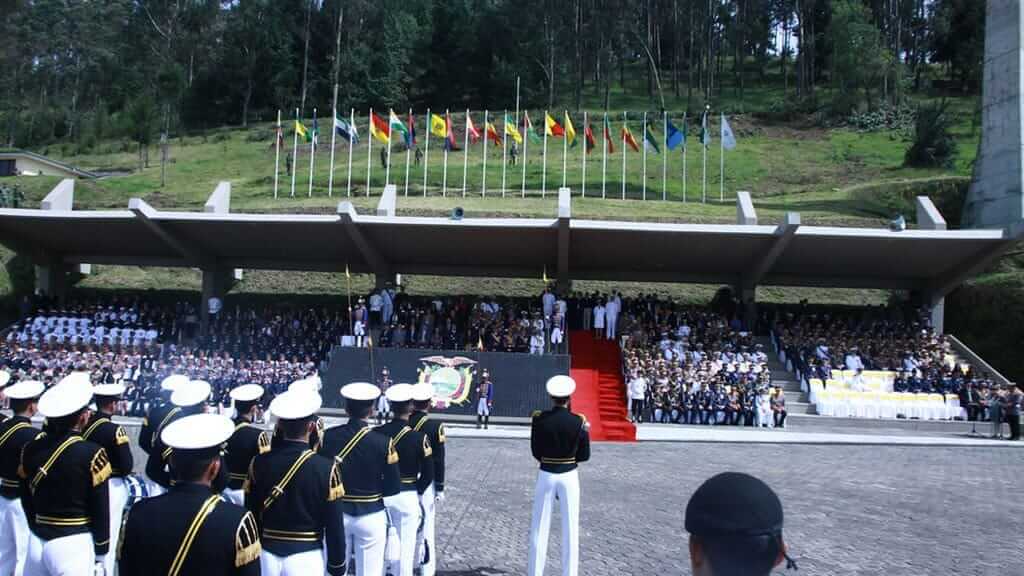
Photo taken from: Asamblea Nacional del Ecuador
Inti Raymi – Summer Solstice
21st June
Inti Raymi is the most important indigenous celebration date in Ecuador’s festival calendar.
In the Quechua language of the Incas, Inti means “sun”, while Raymi means “Celebration”. The Incas placed great importance on the sun and moon, and their movements across the seasons. So, it should come as no surprise that Inti Raymi coincides with the Summer Solstice that is recognized in Western culture. This day marks the longest day of the year.
For the indigenous people of Ecuador, Inti Raymi is a festival to honor Taita Inti (Father Sun). They give thanks for the sun’s heat and energy that allows plants to grow.
How is Inti Raymi celebrated in Ecuador? Typically, Inti Raymi is a combination of ritual bathing, music, dance, food, and alcohol that can last for days on end.
Some of the best places to join in the Inti Raymi celebration in Ecuador include Otavalo, Peguche, Cotacachi, Saraguro, Ingapirca, and Cochasqui.
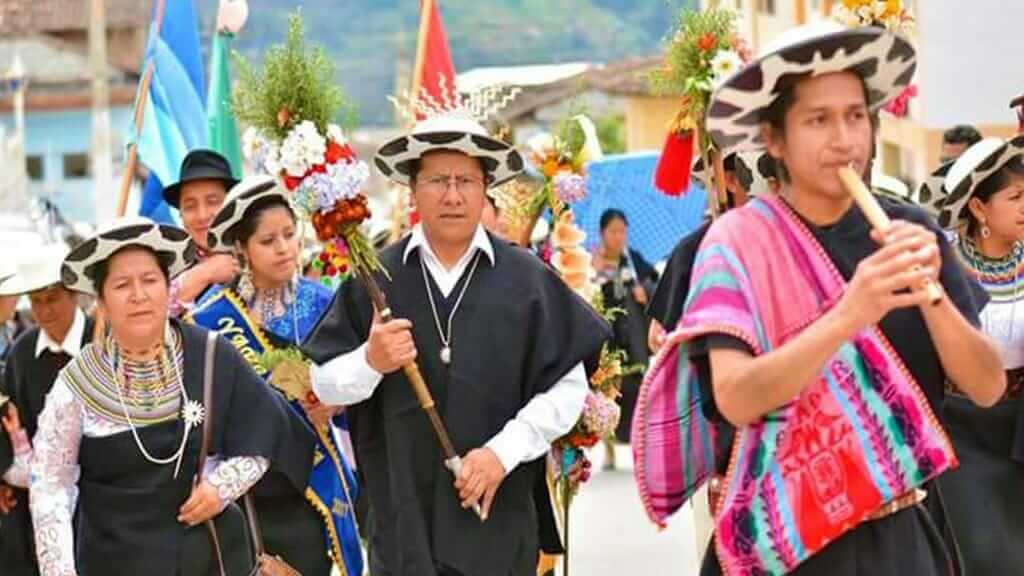
Paseo del Chagra Festival, Machachi
The closest weekend to 20th July
Every year the town of Machachi (located close to Cotopaxi National Park) celebrates the Paseo del Chagra Festival.
Machachi is Ecuador’s cowboy town, surrounded by cattle ranches. Traditional Chagras wear leather chaps, ponchos, and hats, and pride themselves on their fine horse-riding skills.
The Paseo del Chagra is their local celebration. Each local ranch will organize a colorful float to parade through the streets of Machachi together with their Chagra riders. They also test their skills against one another at the local rodeo.
First cry for independence
10th August
On 10th August 1809, South America witnessed the first signs of open rebellion against the Spanish. In Quito, a small group of insurgents led by important figures in Ecuadorian society took the city. Although the rebellion was crushed, important seeds of doubt (and hope) had been sown.
While this was a seemingly insignificant act of revolution by a small group of citizens, it represented the very first time any person in South America had dared to stand up to the colonial power.
Today, the 10th August is observed as an Ecuadorian public holiday, although there are rarely any large celebratory events of note.
GET FREE ADVICE
From an Ecuador destination expert todayVirgen del Cisne Pilgrimage, Loja
30th May & 15th August
The celebration of the Cisne Virgin is one of the oldest pilgrimages in Ecuador.
The famous Virgin of Cisne is the patron saint of farmers (campesinos), who built a magnificent sanctuary in her honor close to Loja city.
The high point of several months of reverence sees the virgin statue carried in pilgrimage from the sanctuary in a large 24-hour procession to the Cathedral in Loja.
Festival of Yamor, Otavalo
From 30th August to 17th September
The Fiesta del Yamor is celebrated in Otavalo town in Ecuador’s northern highlands.
Yamor is an Ecuadorian holiday in honor of the Virgin Mary of Monserrat, the patron saint of Otavalo. It’s also another Ecuador festival in recognition of Pacha Mama (Mother Earth) and her bounties.
The highlight of the festival of Yamor is a traditional drink made of seven different varieties of corn. The revelry also sees a local parade with floats, traditional Andean music with folk dancers, and other local food and drink specialties.
Killa Raymi – Fall Equinox
21 September
Ecuador’s Killa Raymi celebration is the feminine Festival of the Moon and celebrates a time for plowing the fields and sowing seed before the onset of the rains. It is also known as the Festival of the Corn, symbolizing the fertility of Pacha Mama.
Typical Killa Raymi celebrations usually take place at the Ingapirca Inca Site near Cuenca, and Cochasqui Pyramid Ruins north of Quito.
Mama Negra Festival, Latacunga
End of September & the week of the 11th November
The Mama Negra (Black Mother) is one of the more boisterous celebrations in Ecuador and is held twice a year in Latacunga, a town close to Cotopaxi.
The Mama Negra Festival is also known as La Santísima Tragedia (The Holy Tragedy). The celebration is in honor of the Virgen de la Merced (Virgin of Mercy), who is said to have miraculously stopped an eruption of the Cotopaxi volcano that would have destroyed the town back in 1742.
Interestingly, this Ecuadorian festival has origins in indigenous, Spanish, and African cultures. At around the time of this volcanic eruption, African slaves were brought into the Latacunga area to work in the mines. These slaves made a big impression on the locals, who incorporated their arrival into the Mama Negra Festival.
The focus of this colorful parade is Mama Negra herself – dressed up in an elaborate black-faced costume, with baby dolls to represent her children. This unusual character is carried through the town, spraying milk and water onto spectators, as well as throwing candies to children. The parade is complete with other quirky characters.
Mama Negra is a party that usually drags on well into the early hours, and seems only to get louder and more raucous as the night goes on. Expect large crowds, obligatory dancing, and copious servings of local moonshine. This one is a party that you won’t forget in a hurry.
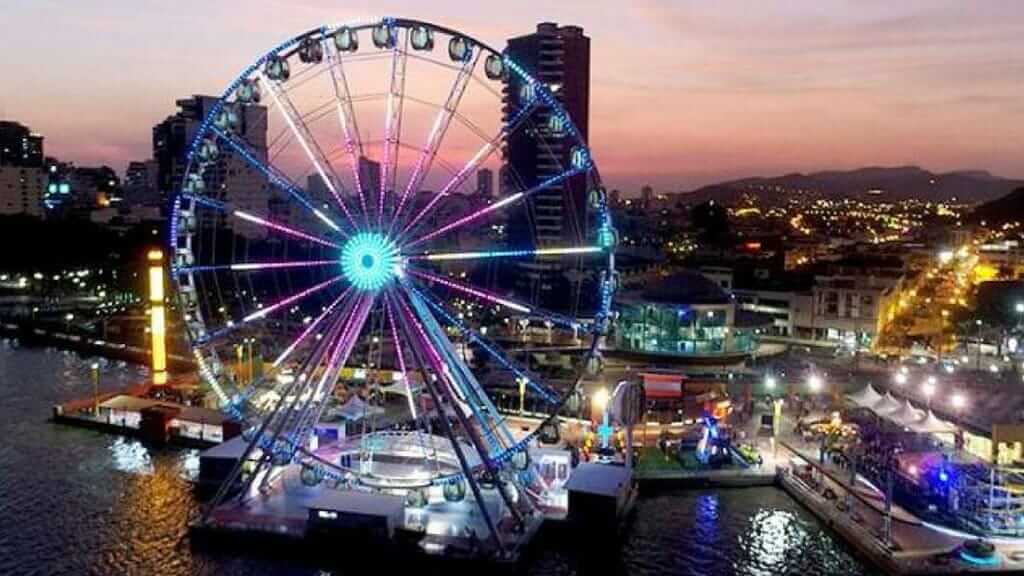
Day of the Dead (All Souls Day)
2nd November
The Day of the Dead is more commonly known in Ecuador as “All Souls Day”. It’s a solemn occasion to remember those close to us who have passed away.
While not as colorful as Mexico’s Day of the Dead, this day in Ecuador is marked by important traditions.
So, how do Ecuadorians commemorate All Souls Day?
Typically, people gather at cemeteries to visit deceased relatives and friends. They bring food, fruit, and flowers, and sometimes live music is played to share the experience between the living and dead.
There is also a very famous, traditional Ecuadorian food that is prepared only at this time of year. Colada Morada is a thick, sweet purple drink made from tropical fruits (naranjilla, babaco, blackberries, strawberries, pineapple), cinnamon, cornflower, and herbs. The colada is accompanied by bread baby dolls called Guaguas de Pan. The bread is also sweet and decorated with colorful frosting.
Colada Morada recipes are passed down from generation to generation as closely guarded secrets. For visitors, most coffee shops across the country serve Colada and Guagas throughout October and the beginning of November.
For those with a sweet tooth (like myself), Colada Morada and Guaguas is a must-try Ecuadorian recipe.
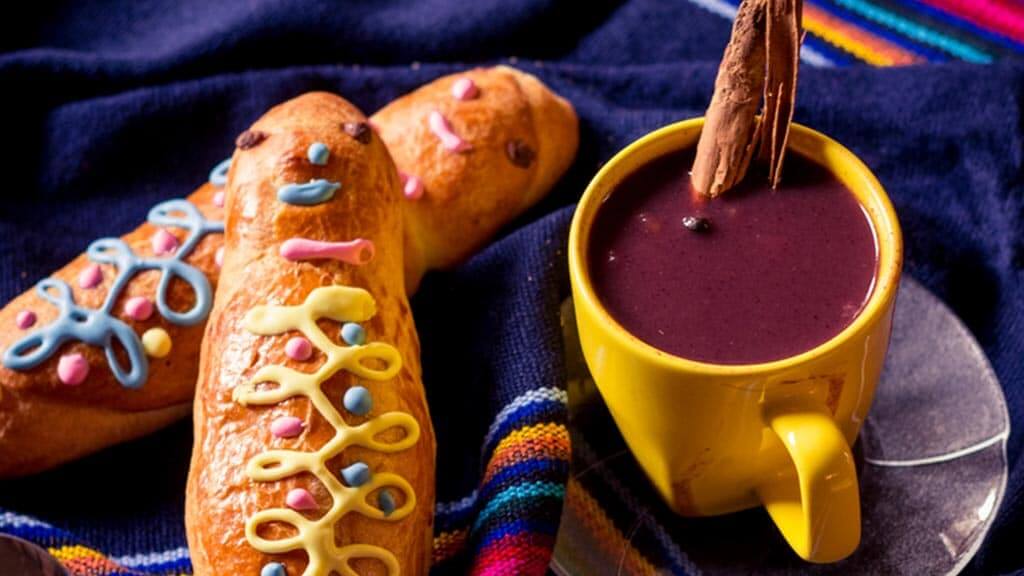
Photo taken from: fm mundo
Independence of Cuenca
3rd November
Cuenca’s Independence Day comes right after All Souls Day, producing a 4-day long weekend holiday in Ecuador.
Across the city’s plazas, there are planned and spontaneous events with fireworks, live bands, and dance performances while revelers dance and drink into the night.
The celebrations come to a head on November 3rd with two annual parades featuring lavish costumes, traditional music, dancing, and military processions in the streets.
The military parade is the largest of the two with all the branches of Ecuador’s armed forces taking part, the police performing motorcycle stunts, and firemen marching down the streets.
The La Morlaquía Parade sees another side of the city, with women from the neighboring parishes dressed in finery marching in groups and riding on elaborate floats. The finale of the spectacle is the announcement of the winner of the Chola Cuencana contest. This is an annual competition between young women from more than 20 parishes for a crown that highlights the traditions of the Chola culture of the Andes.
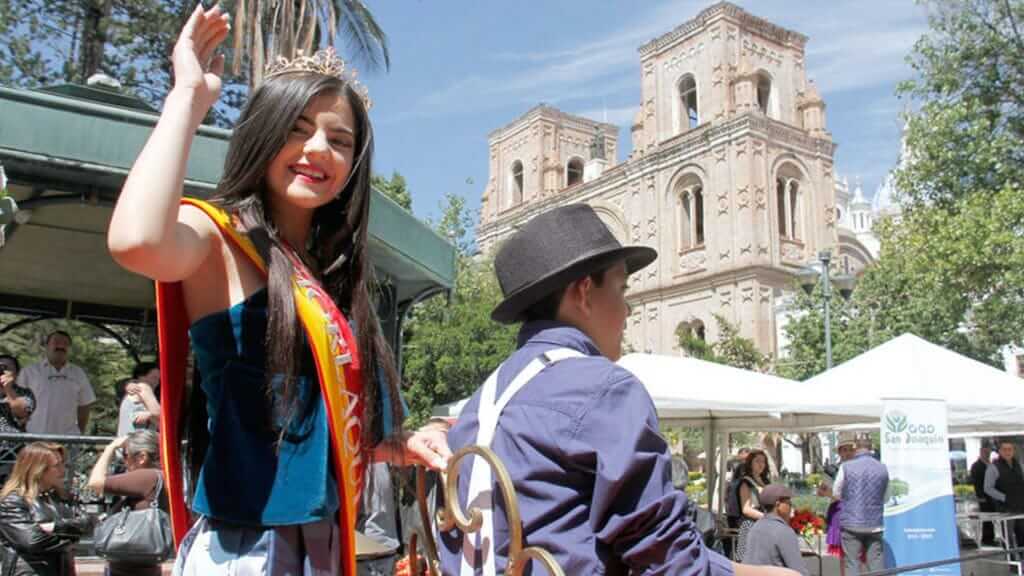
Photo taken from: el mercurio
Guayaquil Independence Day Celebration
9th October
On October 9, 1820, Guayaquil claimed independence from Spain, a date that has been celebrated each year since.
Celebrated passionately in the city of Guayaquil, the event is usually marked by musical concerts, fireworks, cultural events, and parades. Guayaquil is a city with a reputation for partying hard, so if you happen to be in the city on this day be sure to check out event listings.
Fiestas de Quito
6 December & the preceding week
Another popular and unmissable Ecuador Festival is that of the Fiestas de Quito, the biggest party week of the year in the capital.
To celebrate the founding of the city of Quito, the municipality organises a full calendar of cultural events. Most events are free and easy to attend, so this is a great week to spend in Quito City.
Events are held in many districts and communities of the city, from children go-kart racing down steep cobbled streets, to colorful parades, and music concerts with well-known Latin bands in attendance.
Quiteños also arm their own parties across the city. At night, the streets are filled with the Chivas of Fiestas de Quito. These colorful, open-air buses are parties on wheels that often include live bands. The Chivas make stops around town where passengers get out and dance in plazas before heading on to the next stop. While a bit startling in number and the volume of the music, it’s a tradition here that becomes part of the backdrop of the celebration. You’ll find that the spirit of the merry riders carries in the air until the final day of the celebration brings the proceedings into full flow.
The bars and discotecas of the city are usually full to the brim throughout the week. It’s like a coordinated explosive outburst of expression from the city’s residents, who find new levels of energy to keep the party moving.
Quito even has its own traditional drink for the occasion, Canelazo. Each place has its own recipe, but the typical drink is made from aguardiente liquor, cinnamon, naranjilla (a tart orange fruit), water, and sugar. Served hot, it has just the right blend of spice to offset the sting of the strong alcohol and keep the cold at bay.
Visitors might also spot locals playing an unusual card game in coffee shops and bars. The game of Cuarenta (40) goes hand in hand with the Fiestas de Quito, and there are even tournaments with big prizes in most neighborhoods. The rules of 40 are a little confusing at first, but locals are happy to get foreigners to join in with the fun.
For a more cultural angle on the fiestas, most museums of the capital, including the City Museum that details the history of Quito, extend their hours, and La Casa de Musica hosts national orchestras for a more formal way to enjoy the party.
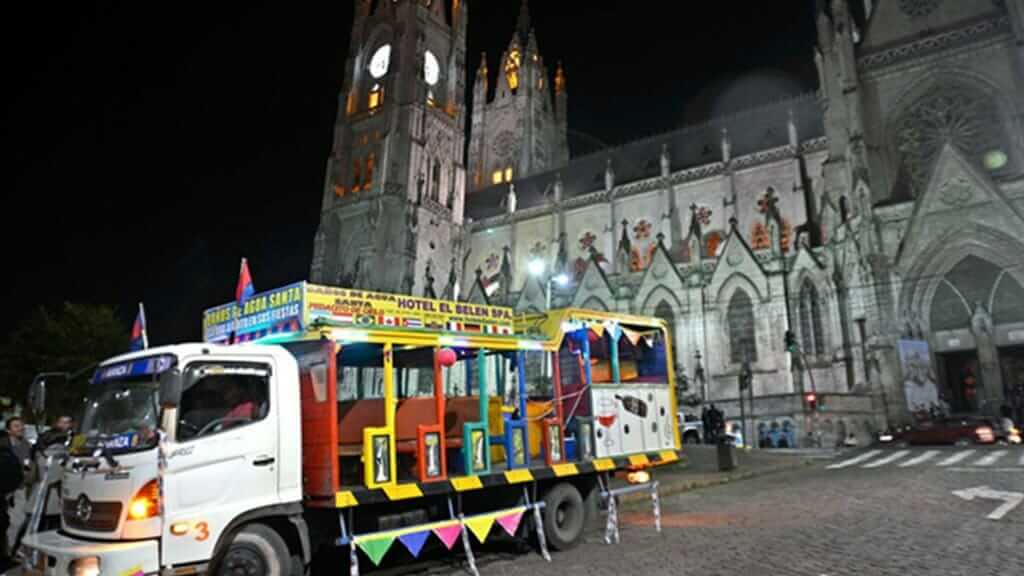
Kapak Raymi – Winter Solstice
21st December
Kapak Raymi, the Winter Solstice, is a time of transformation, from seed to plant after the start of the rains, and from child to adult. The celebrations often involve community rites of passage for young men, who prove themselves in games of strength and demonstrate the knowledge that they have acquired thus far in their lives.
The most well-known celebration takes place in Saraguro, a Quichua town located between Cuenca and Loja to the south of Ecuador. Parades and events last the week before the solstice, and are careful not to overlap with Christmas.

Christmas (Navidad)
24th December
Christmas in Ecuador is a family affair celebrated on the night of the 24th of December. A large meal of Turkey and all the fillings is shared, with rice and seasonal veg. Gifts are also exchanged, or perhaps a Secret Santa in workplaces.
Otherwise, Ecuadorian Christmas is quite a low-key event. There are trees and fairy lights around the country, but fewer traditions are followed in comparison to most European countries.
In Quito, it’s nice to see the Panecillo Hill lit up with a special 3 king nativity. Christmas mass is also an important event for practicing Catholics.
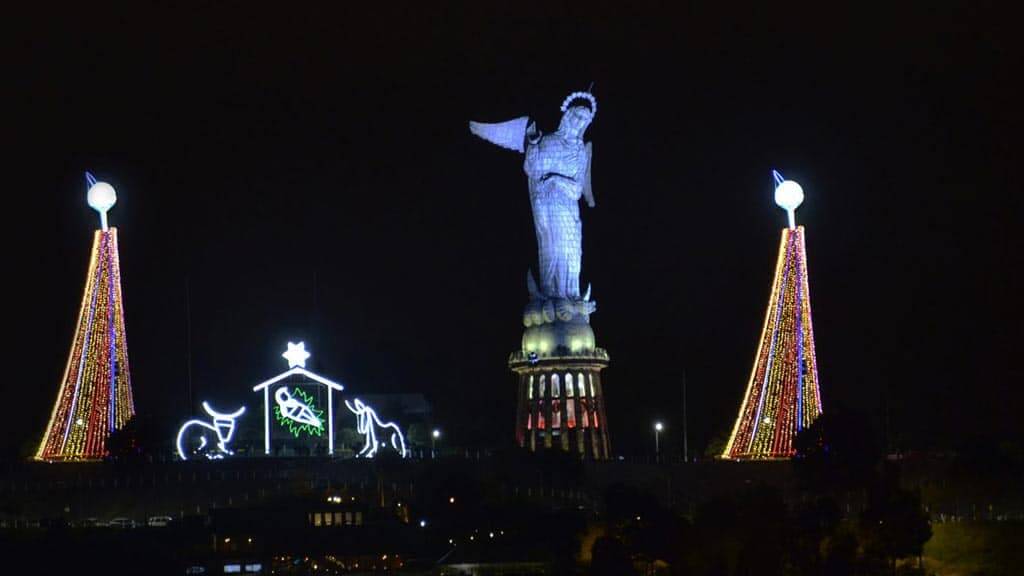
New Year’s Eve
31st December
New Year’s Eve in Ecuador is a time of much tradition and celebration, in many ways more joyful than Christmas.
Many Ecuador New years traditions and customs are quirky and unique, making New Year's Eve a great way to gain a glimpse into Ecuadorian culture. Ecuadorian people are especially warm and friendly at this time of year and relish foreigners joining in their celebrations.
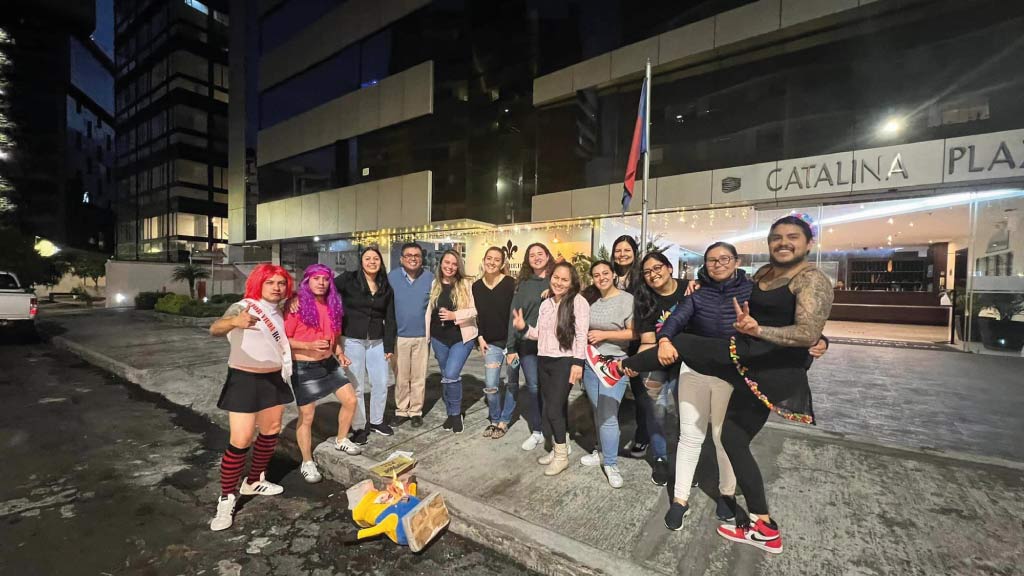
The most popular tradition is that of the burning of the Año Viejo (Old Year). Large papier mache figures are made and sold right across the country in the week before the 31st. Families and communities often make their own figures too. These figures are supposed to represent the events or people of the old year that you most wish to leave behind and forget. Often unpopular politicians are big sellers. At the stroke of midnight, these figures are set alight, leaving only hopes of a better year to come.
Other Ecuadorian New Year traditions include eating 12 grapes at the last minute before midnight, wearing different colored underwear depending on your hopes for the new year (red is for love, yellow for wealth), and men dressing up as widows to collect money for the party from passing cars.
So, that just about covers 12 months of Ecuador Festivals, holidays, and celebrations. As you can see, there’s something happening pretty much every month. Ecuadorians love a good party and rarely need much excuse to throw one. They also adhere to some very old and interesting traditions, even in today’s modern society.
Note that in this post we have only covered the main celebrations throughout the year. In truth, it’s not unusual to stumble across a random, small festival held in a small pueblo whilst traveling here. Our advice is to join in the merriment. Often these spontaneous and unexpected local parties can be a big highlight of your Ecuador vacation and your path to new friends and fun experiences.
I also recommend checking local event listings when traveling in the big Ecuadorian cities. You never know when interesting cinema, music, or food festivals pop up.
Contact us for a FREE TOUR QUOTE – Happy Gringo specializes in custom-made trips right across Ecuador, Galapagos, and the Amazon. Dates permitting, we’ll be happy to include a local Festival experience in a vacation itinerary for you.
Book with the #1 Trusted
Ecuador Travel Agency
In conclusion, there are many Ecuador Celebrations and Festivals throughout the calendar year. Many of them include traditions that go back centuries.
Ecuadorian festivals are colorful and fun, missing street parades, specialty cuisine, live music, and dance. Alcohol is usually the secret ingredient that fuels the party.
If your vacation dates happen to coincide with an important Ecuador celebration then I recommend making time to fit it into your travel schedule. These events will often mark one of the highlights of your trip, providing wonderful photos and memories when you return home.

